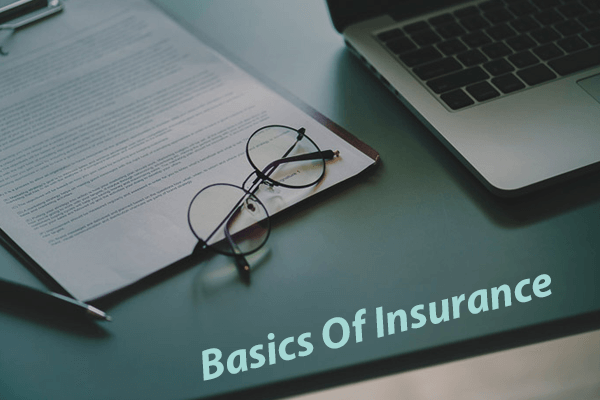


Insurance is a financial product for protecting a dependent (family or an individual) or a business from a future financial loss. The guarantee letter which assures making loss good is known as the Insurance Policy. Going for an insurance policy is a form of risk management, primarily used to hedge against the risk of a contingent or uncertain loss.
A business entity that provides such assurance against future loss (known as insurance) is called the insurer, insurance company, insurance carrier or simply an underwriter. A person or business that buys insurance is known as an insured or as a policyholder. The insurance transaction involves the insured assuming a guaranteed and known relatively small loss in the form of payment to the insurer in exchange for the insurer's promise to compensate the insured in the event of a covered loss. The loss may or may not be financial, but it must be convertible to financial terms, and usually involves something in which the insured has an insurable interest established by ownership, possession, or pre-existing relationship. For example, when an insured person expires, the insurer can not return the dead person but tries to make good the financial loss happened owing to the death of the deceased person. The insured sums are paid to a designated person known as the nominee.
As mentioned earlier, the insured person or business receives a contract, called the insurance policy, which details the conditions and circumstances under which the insurer will compensate the insured. The amount of money charged by the insurer to the policyholder for the coverage set forth in the insurance policy is called the premium. If the insured person experiences a loss which is potentially covered under the insurance policy, the insured person submits a claim to the insurer for processing by a claims adjuster.
Reinsurance: The insurer may hedge its own risk by taking out reinsurance, whereby another insurance company agrees to carry some of the risks, especially if the primary insurer deems the risk too large for it to carry. This can be compared to the consortium of lenders or multiple banking arrangement in case of bank lending to large borrowers.
In India, the insurance industry (or insurance sector) falls under Banking, Financial Services and Insurance sector which is popularly known as BFSI. Insurance sector is also classified under two broad sectors: 1) Life and 2) Non-Life (or General Insurance). Health Insurance falls under General Insurance. The regulatory authority for the insurance sector is known as Insurance Regulatory and Development Authority of India (IRDAI) which is sometimes referred as simply IRDA. Its headquarter is in Hyderabad.
The insurance industry of India has 57 insurance companies -24 are in the life insurance business, while 33 are non-life insurers. Among the life insurers, Life Insurance Corporation (LIC) is the sole public sector company and is at pole position. There are six public sector insurers in the non-life insurance segment. In addition to these, there is a sole national re-insurer, namely General Insurance Corporation of India (GIC Re). Other stakeholders in the Indian Insurance market include agents (individual and corporate), brokers, surveyors and third-party administrators servicing health insurance claims.
Market Size
In India, the overall market size of the insurance sector is expected to US$ 280 billion in 2020.
Government's policy of insuring the uninsured has gradually pushed insurance penetration in the country and proliferation of insurance schemes.
Gross premium collected by life insurance companies in India collectively, increased from Rs. 2.56 trillion (US$ 39.7 billion) in FY12 to Rs. 7.31 trillion (US$ 94.7 billion) in FY20. During FY12-FY20, premium from new business of life insurance companies in India increased at a CAGR of 15% to reach Rs. 2.13 trillion (US$ 37 billion) in FY20.
Overall insurance penetration (premiums as% of GDP) in India reached 3.71% in FY19 from 2.71% in FY02.
Life insurers reported 14% YoY growth in individual annualised premium equivalent (APE) in October 2020, compared with 4% YoY in September 2020.
The market share of private sector companies in the non-life insurance market rose from 15% in FY04 to 56% in FY21 (till April 2020). In life insurance segment, private players had a market share of 31.3% in new business in FY20.
Investments and Recent Developments
The following are some of the major investments and developments in the Indian insurance sector.
Government Initiatives
The Government of India has taken number of initiatives to boost the insurance industry. Some of them are as follows:
Road Ahead
The future looks promising for the life insurance industry with several changes in regulatory framework which will lead to further change in the way the industry conducts its business and engages with its customers.
The overall insurance industry is expected to reach US$ 280 billion by the end of 2020. Life insurance industry in the country is expected to increase by 14-15% annually for the next three to five years.
The scope of IoT in Indian insurance market continues to go beyond telematics and customer risk assessment. Currently, there are 110+ InsurTech (on the lines of FinTech such as policybazaar.com) start-ups operating in India. Demographic factors such as growing middle class, young insurable population and growing awareness of the need for protection and retirement planning will support the growth of Indian life insurance.